Day 23: Starting Points
A single column tie around the ankle is a popular way to start a frog tie, one among the many starting points. The intent of the first rope will set the tone for the rest of the tie. Are we making this more comfortable, painful, or posing the body in an aesthetic way? Different starting points will also change how we bring the leg into position.
Starting Points Variations
For many people, the front of the tibia is a sensitive area, starting elsewhere can help make the tie more sustainable. Being comfortable is not always the goal, using the feet or toe as our anchor point will create interesting sensations. Can you create a tie with an invisible starting point?
Solution for the invisible starting point here!
Practice Time!
Create frog ties with different starting points. The toes and the waist are two interesting alternate places to start, try it out!
Self-evaluation checklist:
- Are there any painful sensations? In particular from overextension at the knee or on the front of the tibia bone.
- Is the leg fully bent, can the leg still move at the knee?
- Frictions are tight and compact with no undesired twists.
- Tension is even across the tie.
- Move the leg around, does the tie stay in place?
- Pull the tie in different directions; how does it hold?
- How is the blood circulation? Does the foot become numb after some time?
Exploration ideas:
- What other starting points could you use?
- How does each starting point influence the rest of the tie?
- Can you continue an existing tie and create a frog tie with the middle of the rope?
- Can you create a tie that appears to have no starting point?
Being Tied: Your Favorite Futomomo – sansblague
While experimenting with alternative starting points for the futomomo, take a moment to also experiment with how pressure can be distributed within each wrap to take away strain from the shinbone. The challenge here is to compress the leg only by pushing the rope into the muscles of the thigh, while laying the wraps very gently against the shinbone. If your partner agrees, you can take this futomomo exercise as an opportunity to practice both verbal feedback and rope handling. In that case, tell the one tying you where the pressure goes in every wrap, being as exact as you can. Find out together what it takes to make the rope really dig into the thigh while staying soft on the shinbone. Hopefully, with your analysis of the effects the rope has on your body, you can teach the one tying you to tie the most comfortable futomomo possible for your leg.
If you have been doing the full futomomo week, you can finish off by nominating your favourite futomomo using for example the following criteria:
- What futomomo pattern is most likely to stay in place?
- What futomomo pattern is most likely to feel comfortable for a longer time?
- What futomomo pattern is most likely to make you feel happy?
Inspirations and Resources
Credit: Foot start – M: NathanielFlumen R/P: Ebi McKnotty – Toe Start – M: AlexK7 R/P: Ebi McKnotty – Waist start – M: Miss_Soffia R/P: Ebi McKnotty – Chest start – M: _Era_ R/P Ebi McKnotty – Invisible start – M/R: Ebi McKnotty P: AlexK7
Or return to Frog Ties for more options.

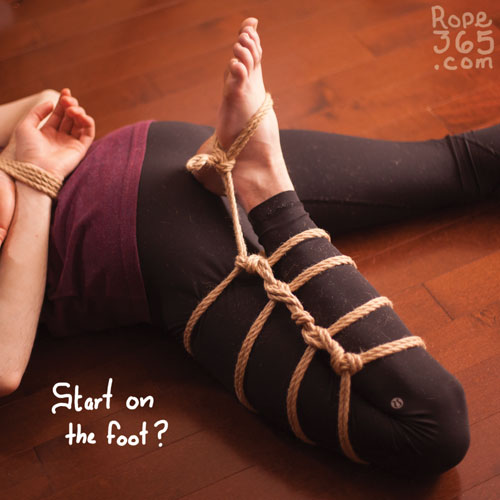
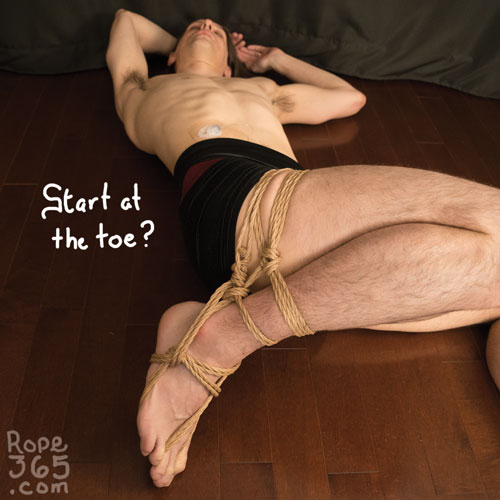
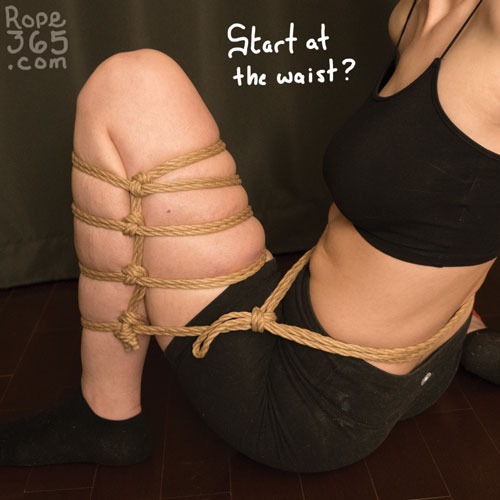
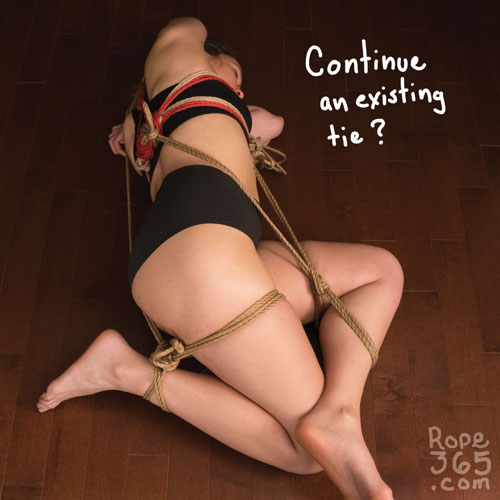
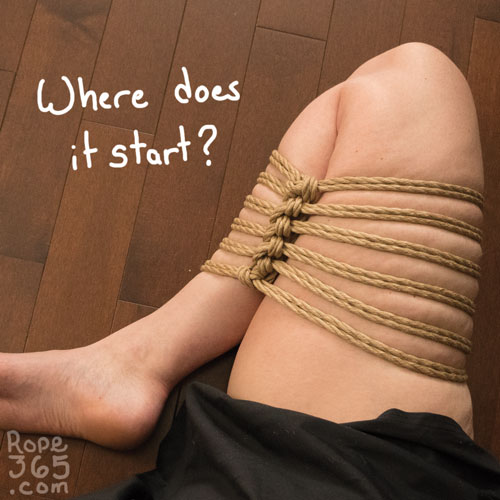
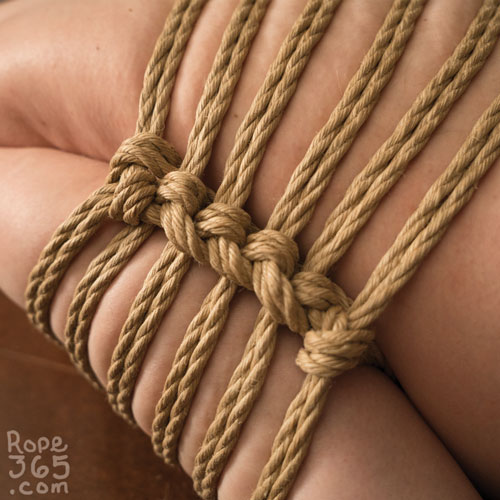
Leave a Reply